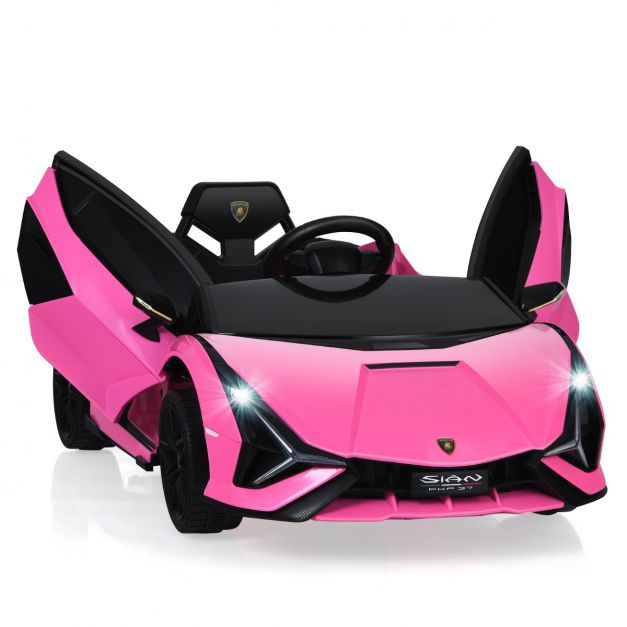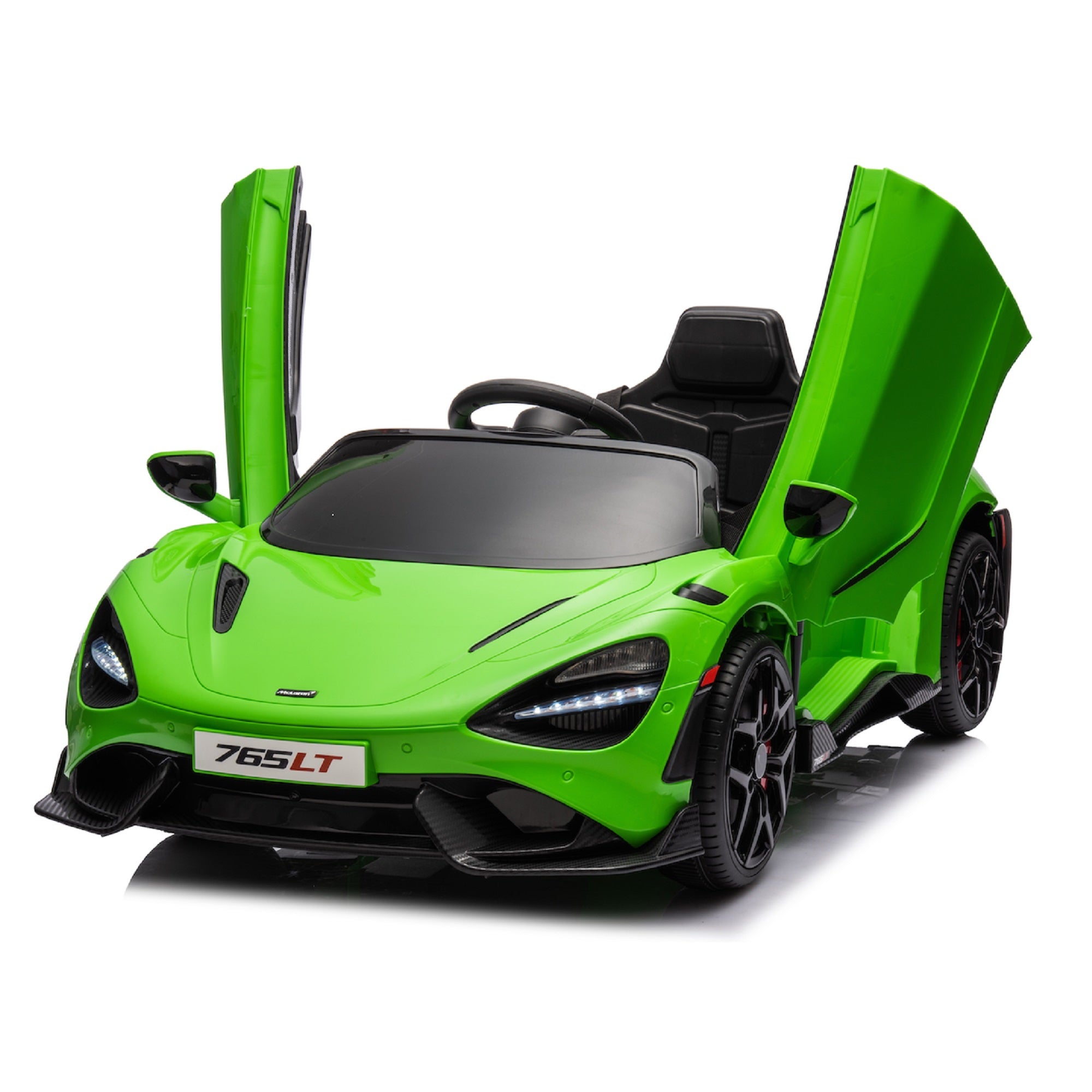These are the benefits of remote-controlled or electric kids' cars. Here are the advantages of remote-controlled and electric kids cars. Advantages of Electric Kids' Cars -
Independence Electric cars for children let them drive on their own. This gives them the feeling of autonomy and control as they explore their surroundings.
Motor Skill Development: Driving electric cars requires motor skills such as steering as well as acceleration and braking. This helps develop coordination and spatial understanding in children.
Realistic Experience- Electric cars for children often have realistic designs, which include functioning headlights, engine sounds and horn sounds. This makes the play experience more immersive and engaging.
Outdoor Play- Electric kids cars are designed to be used outdoors on asphalted surfaces like playgrounds, driveways or sidewalks. Children can play, explore and have fun in the fresh air.
Driving an electric car requires physical activity. Children are taught to move and work out with their feet and hands.
Remote-controlled cars for children: Benefits and advantages
Parental Supervision Remote-controlled children's cars allow parents to supervise and help their children play by providing an extra layer of safety and control.
Guided Learning - Parents may use the remote control to guide their child to teach the child how to safely operate the vehicle. Eventually, they can move to autonomous driving as the child grows in confidence and skills.
It is versatile - It is able to be controlled by the child manually or remotely operated by the parents, allowing flexibility and versatility to suit different levels of skill.
Safety - Parents can intervene and prevent accidents or collisions with the help of remote controls to stop the car or steer it away from hazards or obstacles and increase safety while playing.
Entertainment - Remote-controlled children's cars provide entertainment for both children and parents, as they can interact and play together while exploring the capabilities of the car.
In the end, the decision between electric and remote-controlled kids' cars depends on the age of the child, skill level, preferences, and the supervision of parents. Electric cars allow for realistic playing and independence, whereas remote controlled vehicles are safer, provide direction and allow for active play. Check out the most popular Lamborghini kids car for blog info including two seater childrens electric cars, car toy car toy, ride of car, electric car ride, remote control childrens car, race car toy car, electric toy car, pedal car, lambo toy car, childs car toy and more. .

What Models For Kids Can Be Used Indoors And Outdoors?
Indoors or out, kids automobiles are designed to work in various conditions and settings. These models are designed differently - Indoor Use Cars
Size and weight Cars designed that are designed for indoor use tend to be lighter and smaller and can maneuver more easily within tight areas like living rooms, hallways or playrooms. They're small enough to fit through tight corners and narrow passageways without causing damage to furniture or walls.
Low Ground clearance: Indoor vehicles are designed with low clearance to allow to avoid getting stuck on carpets, rugs or thresholds. This ensures seamless and uninterrupted movement over indoor surfaces without fear of getting stuck or tipping over.
Smooth Wheels. Indoor cars often feature wheels made of materials that are smooth, like plastic or rubber. These wheels provide better grip and traction when used on smooth surfaces, like hardwood floors, laminate flooring or tile. The wheels are designed to reduce noise and avoid scratching or scuffing surfaces.
Limit Speed - Vehicles designed for indoor use usually have smaller maximum speeds to guarantee the safety of operation and control in restricted spaces. This could help prevent accidents and collisions with furniture, walls, or other objects found in indoor spaces.
Outdoor Use Cars -
Durable Construction: Vehicles made specifically for outdoor use feature durable materials like tough plastic or metal which can withstand the rough handling, outdoor elements, such as moisture and sunlight. They are less susceptible to wear and tear caused by exposure to outdoor conditions.
Greater Ground Clearance: Outdoor use vehicles have a higher level of ground clearance to navigate uneven terrain or bumps encountered when driving outdoors. They are able to traverse rough surfaces like pavement as well as gravel and grass.
Traction Tires These are the tires on vehicles that are intended for use outdoors usually have treads, or patterns that enhance traction and grip when driving over uneven or slippery surfaces. This provides stability and control while driving on rough terrain and prevents sliding or skidding.
Weather Resistant: Cars designed for outdoor use often feature weather-resistant features like sealed electronics, or waterproof casings. They could also utilize the rust-resistant materials to avoid damage caused by water. They can withstand the effects of mud, rain or puddles with no loss of performance.
High Speed - Outdoor use cars usually have higher maximum speeds to accommodate open spaces and longer distances that are often encountered in outdoor environments. Children can have an adventurous and thrilling experience on the road.
If you take into consideration these design features and characteristics, parents can select a children's car model that is tailored to their specific usage requirements and the environment they are in, indoors or outdoors, ensuring an enjoyable, safe and lasting play experience for their child. Check out the recommended discover more on Audi ride on car for blog examples including kids electric cars, cars pedal car, 2 seater electric cars, race car toy, kidscars, a toy car, remote control childrens car, electric rideons, car toy car toy, childs ride on car and more. .

What Kind Of Children's Remote Control Cars Are Available? What Are The Advantages And Disadvantages Of These Vehicles?
Remote control children's vehicles, also known as RC cars, or remote-controlled vehicles, come in various dimensions and styles as well as prices to meet different preferences and budgets. Pros and cons as well as the sizes and types, as well as the prices, and styles of remote-controlled cars for children are listed below.
Electric RC Cars – Battery-powered remote controlled cars suited for outdoor or indoor use. They come in a range of designs like buggies, trucks and sports cars.
Nitro RC Cars – Gas powered remote controlled cars that offer greater performance but need greater maintenance. They're generally bigger and cost more than an electric RC cars.
Scale Models (Remote-controlled replicas) Miniatures of real-life automobiles like airplanes, trucks or automobiles. Scale Models are offered in a variety of scales that range from 1-10 to 1-24. Larger scales give more detail and realistic appearance.
Sizes -
Remote control cars for children are available in many dimensions. They range from small replicas to larger-scale models. The size of the vehicle can impact the performance of it and its speed.
Micro-sized vehicles are compact and light. This makes them ideal to use indoors with smaller children. The larger cars have greater power and endurance and are ideal for racing outdoors and off-road driving.
Prices -
The costs of remote controlled cars for children vary based on various factors, including size, features, brand and build quality.
Small electric RC cars be priced between $20 and $100, while larger-scale nitro and electric cars are available between $100 and $500 or more.
Models and top-of-the-line hobby RC automobiles cost anywhere from a few hundred to more than a 1000 dollars, depending on the degree of detail.
Pros and Cons
Pros -
Entertainment - Remote controls for children's cars offer endless entertainment and fun for adults and kids alike.
Learning. Driving a RC car lets children develop hand-eye coordination, spatial awareness and problem-solving skills.
Social Interaction. You can go on RC vehicles with your family and friends and encourages social interaction.
Customization - Many RC automobiles can be modified by using aftermarket parts, upgrades, and accessories to enhance the performance and look.
Cons
Cost - High-end models that have advanced features, such as hobby grade automobiles, can be very expensive.
Learning Curve - Operating an RC car requires practice and skills, and young youngsters may have difficulty when it comes to the controls at first.
Maintenance is necessary for car owners who own RC vehicles. They must regularly clean, lubricate and perform repairs or replace parts.
Safety Issues - RC vehicles pose dangers to safety including falls, collisions and electrical dangers if they aren't used under the supervision of an adult and with care.
Children of all ages will enjoy remote control cars. But it is essential to think about things like cost, size and security prior to deciding on the right model. For older kids, hobby grade RC cars may be a better option. But, smaller models could be suitable for children who are younger. View the recommended kids ride on cars kidscars.co.uk recommendations for website advice including 2 seater electric cars, childrens electric ride on, childrens ride on, lambo toy car, a toy car, kidscars, electric two seater cars, toy in car, childrens digger, electric two seater cars and more. .
